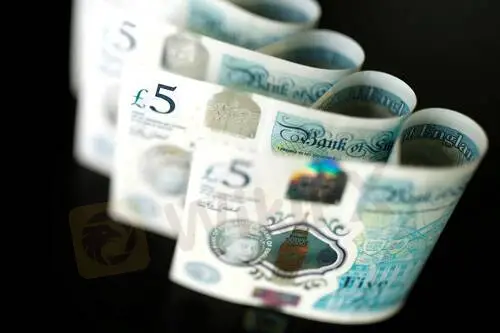简体中文
繁體中文
English
Pусский
日本語
ภาษาไทย
Tiếng Việt
Bahasa Indonesia
Español
हिन्दी
Filippiiniläinen
Français
Deutsch
Português
Türkçe
한국어
العربية
British Pound Drops on Dovish Rate Hike Vote
Abstract:Despite hiking rates by 0.25%, the Bank of England decision was made with a surprisingly dovish voting bias, triggering a sharp drop in the British Pound.
March 2022 BoE Monthly Bank Rate
Earlier today, the Bank of England announced a hike in its bank rate of 0.25% to establish a new higher rate of 0.75%. This was only the second rate hike by the Bank in almost four years and comes after a sustained period of historically extremely low rates and an asset purchase program ended last December. The rate hike was agreed upon by an 8 to 1 vote of the Banks monetary policy committee, with the one dissenting member voting for a stronger rate hike of 0.50%, meaning that all committee members were in favour of some rate hike. However, it had been expected that more members would vote for the 0.50% option, so we had a dovish surprise which was enough to send the British Pound approximately 100 pips lower very quickly against the US Dollar and the Japanese Yen. The Pound also fell strongly against the Euro.

The reason for the committees dovish tilt away from the more hawkish voting pattern which had been expected was, as the Bank stated, the economic impact of the war in Ukraine and resulting inflation fears, which has knocked stock markets and is likely to have some negative impact upon economic growth in European nations such as the UK. However, it could also be argued that a likely impact of the war in Ukraine is a commodities price shock, which should feed into yet higher inflation, which would then logically require higher rates from the Bank of England to bring inflation back down towards its target level of 2%. British inflation is currently running at an annualized rate of 5.5%, which is a 30-year high. With the bank rate now at 0.75%, the UK is suffering a real negative interest rate of 4.75%.
What Does This Mean for Traders?
Traders can consider taking a more bearish bias on the British Pound. This could be expressed by looking to day trade GBP/USD or GBP/JPY in a short direction over the rest of today or tomorrow – however, the current sharp move may only be a short-term spike which might already have run its course. Longer-term traders might instead seek to slowly build a position by adding more if the GBP/USD continues to fall, or alternatively to wait for a breakdown beyond the nearest key support level at $1.3078 or a test from below of $1.3125.
On a more cautionary note, it should be noted that the price movement we are seeing in the British Pound right now is far from exceptional.
Disclaimer:
The views in this article only represent the author's personal views, and do not constitute investment advice on this platform. This platform does not guarantee the accuracy, completeness and timeliness of the information in the article, and will not be liable for any loss caused by the use of or reliance on the information in the article.
WikiFX Broker
Latest News
JUST Finance and UBX Launch Multi-Currency Stablecoin Exchange
XM Revamps Website with Sleek Design and App Focus
Global Shift in Cryptocurrency Taxation: Italy and Denmark Chart New Paths
Webull Introduces 24/5 Overnight Trading to Extend U.S. Market Access
TradingView & Mexico’s Uni. Partnership, to Enhance Financial Education
Something You Need to Know About SogoTrade
eToro Launches Global-Edge Smart Portfolio: A Balanced Approach to Growth and Stability
Darwinex advises traders to update MT4 & 5
Revolut X Expands Crypto Exchange Across Europe, Targeting Pro Traders
Broker Review: Is Exnova Legit?
Currency Calculator



